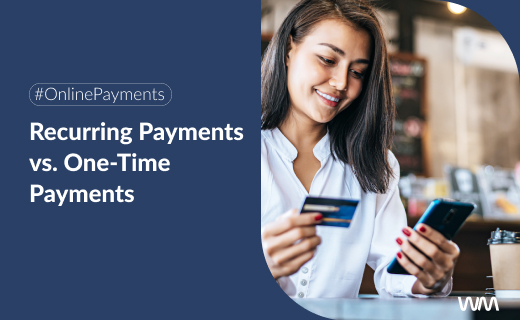Today, we have several payment methods at our disposal. One-time payments, such as cash or credit card payments, and recurring payments, such as subscriptions. Both involve the transfer of money related to the sale of goods or services, but there are significant differences between them.
In this blog, we will explore these differences, examining how they work, the best situations to use each payment method, and their respective evolutions. If you’re interested in learning all these details, keep reading our blog.
What is a One-Time Payment?
One-time payments refer to a money transfer for the sale of goods that occurs at a specific moment for a set amount, without establishing a continuous relationship with the seller.
This type of payment is most common in e-commerce, where the purchase is made for a predetermined price on the sales page.
Advantages of One-Time Payments
Flexibility: No long-term relationship with the seller is required.
No Long-Term Financial Commitments: Payment is made at the moment of purchase.
No Risk of Non-Payment: Payment is completed immediately.
Complete Control Over Expenses: You only pay when you purchase.
Convenience: Ideal for transactions where the customer is present, either online or physically.
Mandatory for Non-Recurring Payment Businesses: Some businesses do not have recurring payments, making one-time payments essential.
What is a Recurring Payment?
Recurring payments involve transferring money related to the sale of goods periodically, typically monthly, quarterly, or annually. The amount can be fixed or variable.
Nowadays, recurring payments can be made only through credit cards or direct bank debits, with emerging methods like Bizum being introduced gradually.
This payment type is used for services and subscriptions that require regular payments to maintain continued use. Additionally, there are unscheduled payments where the company stores the customer’s payment data and uses it only when the service is initiated by the customer, such as with Uber or Cabify.
Benefits of Recurring Payments
Increased Customer Loyalty: Regular payments foster long-term customer relationships.
Better Payment and Collection Control: Easier to manage cash flow.
Predictable Income and Expenses: Simplifies financial forecasting.
Convenience and Ease of Use: Payments are automatic.
Tokenization for Security: Payment data is protected by converting card numbers into tokens.
For more on tokenization, check out our article on enhanced business security with tokenization.
For online recurring payments, various applications are available. For example, PayPal allows you to set fixed or variable payments and billing cycles for specified periods.
Difference Between One-Time and Recurring Payments
More than just a difference, it’s about the evolution from one-time to recurring payments and how this transition is becoming the norm.
Why?
As mentioned, recurring payments offer greater simplicity by automating payments. This eliminates the need for the customer to be present and makes financial management easier for businesses. This provides financial stability with predictable recurring income. From the customer’s perspective, they benefit from the convenience of spreading out expenses without a large upfront payment, like with a software subscription.
How Can Wannme Help with Recurring and One-Time Payments?
At Wannme, unlike many competitors focusing solely on the “subscription economy” with fixed amounts at regular intervals, we offer greater flexibility in setting the frequency and amount for each payment. Wannme provides the ability to customize payment plans to fit individual customer situations and preferences, resulting in satisfaction, convenience, and a significant competitive advantage.
¡Follow us on LinkedIn!






